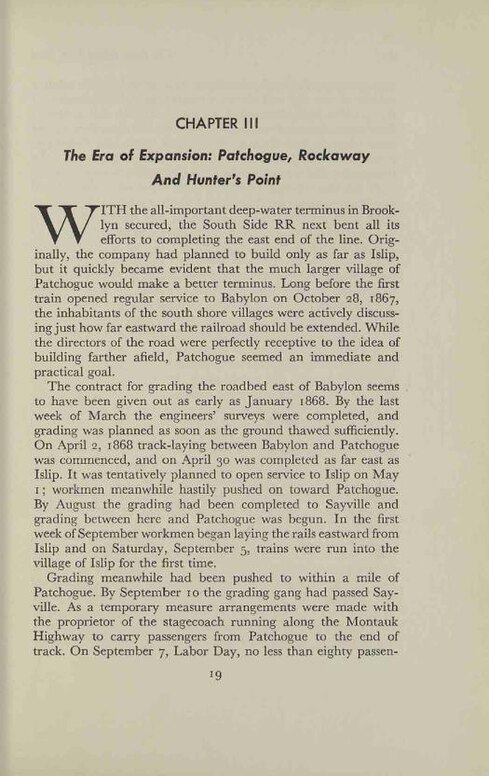CHAPTER III
The Era of Expansion: Patchogue, Rockaway And Hunter's Point
WITH the all-important deep-water terminus in Brooklyn secured, the South Side RR next bent all its efforts to completing the east end of the line. Originally, the company had planned to build only as far as Islip, but it quickly became evident that the much larger village of Patchogue would make a better terminus. Long before the first train opened regular service to Babylon on October 28, 1867, the inhabitants of the south shore villages were actively discussing just how far eastward the railroad should be extended. While the directors of the road were perfectly receptive to the idea of building farther afield, Patchogue seemed an immediate and practical goal.
The contract for grading the roadbed east of Babylon seems to have been given out as early as January 1868. By the last week of March the engineers' surveys were completed, and grading was planned as soon as the ground thawed sufficiently. On April 2, 1868 track-laying between Babylon and Patchogue was commenced, and on April 30 was completed as far east as Islip. It was tentatively planned to open service to Islip on May 1; workmen meanwhile hastily pushed on toward Patchogue. By August the grading had been completed to Sayville and grading between here and Patchogue was begun. In the first week of September workmen began laying the rails eastward from Islip and on Saturday, September 5, trains were run into the village of Islip for the first time.
Grading meanwhile had been pushed to within a mile of Patchogue. By September 10 the grading gang had passed Sayville. As a temporary measure arrangements were made with the proprietor of the stagecoach running along the Montauk Highway to carry passengers from Patchogue to the end of track. On September 7, Labor Day, no less than eighty passen-
19
